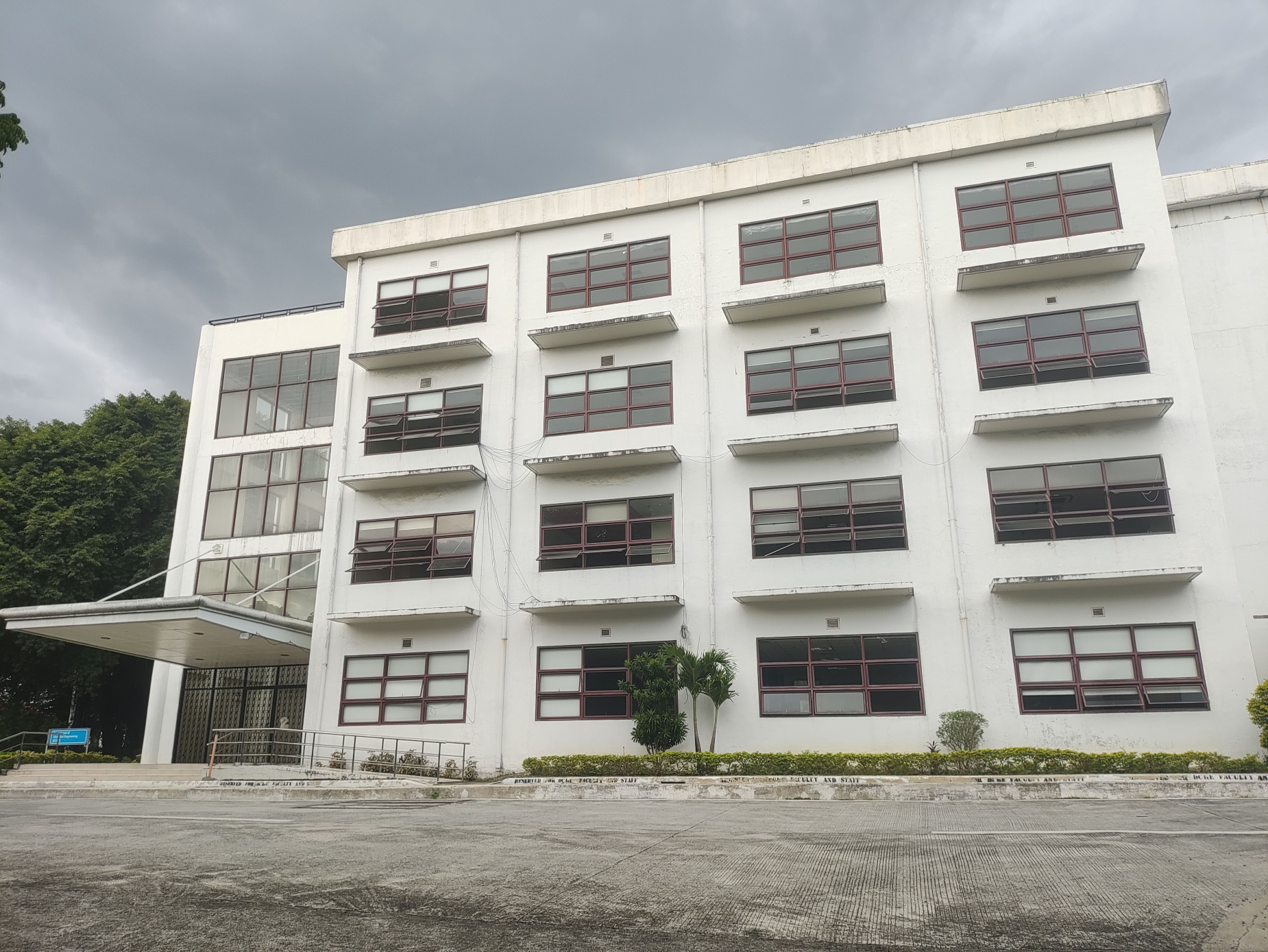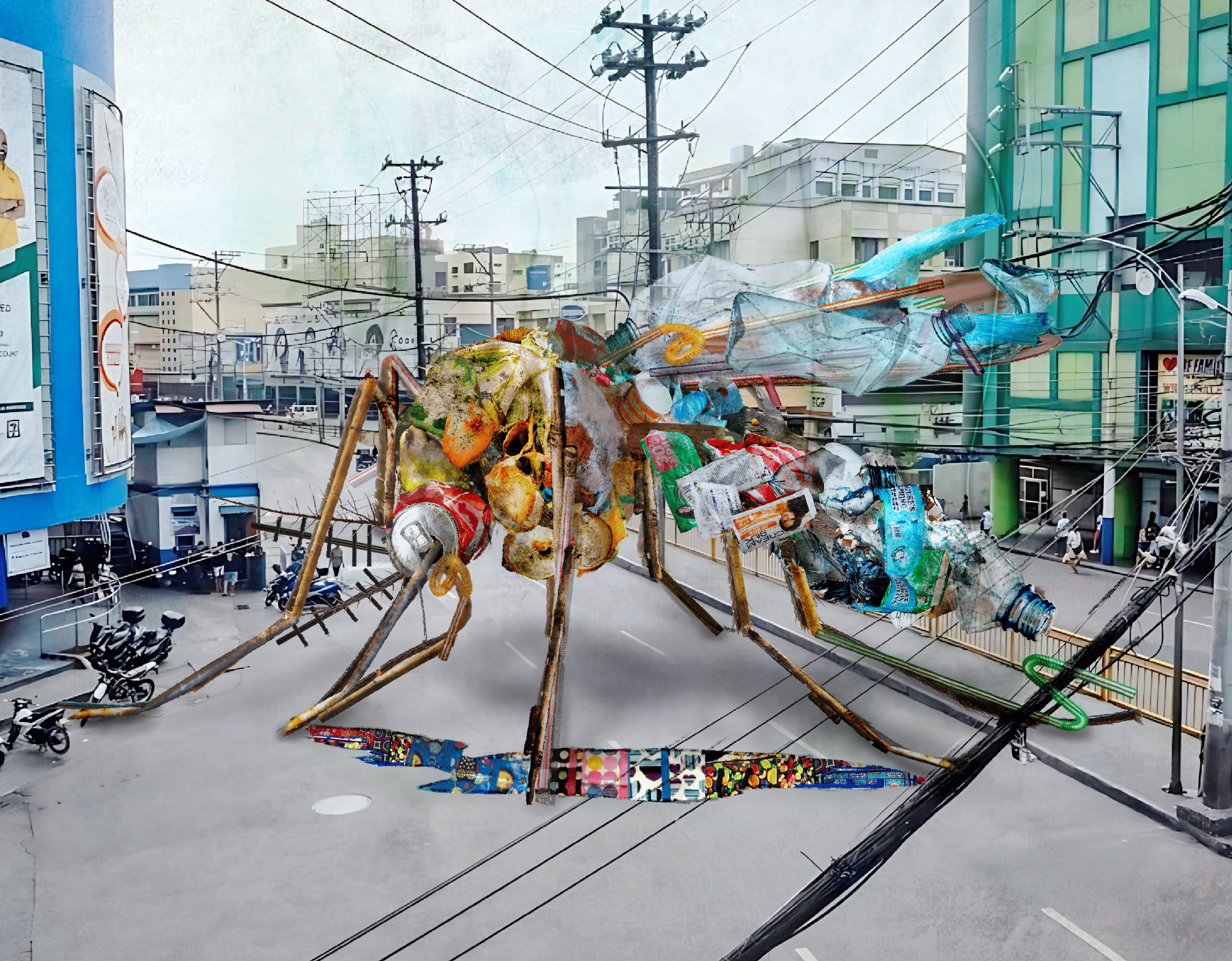Vly Fortius Villegas, a graduating chemical engineering student, lamented that he may not be able to step inside the Department of Chemical Engineering (DChE) Building as an undergraduate following months of delays in the completion of its renovation. Displaced across various corners of the campus and without adequate spaces, students and faculty members of the department settle into a buildingless school year.
More than a year has passed since the DChE Building was vacated to make room for waterproofing and renovation of the roof deck, as portions of the ceiling leaked water during heavy rains.
Now, chemical engineering students share portions of the Melchor Hall with the Institute of Civil Engineering (ICE), as most of their majors are held away from the DChE Building. Their struggles are shared by displaced DChE faculty who lack sufficient spaces to conduct their work.
The DChE Building renovation’s effects on the chemical engineering populace underscores a detrimental lack of student, faculty, and organization spaces as a result of bureaucratic hurdles in the government, severely affecting the quality of education received by the students.
A Displaced Program
The DChE building comprises four sections—A, B, C, and D. Only the pilot plant in D and select labs in C are accessible, while classrooms, faculty rooms, and computer labs in A and B remain unusable..
While the official reasons for the renovation were not openly disclosed to students, those who frequented the upper floors of the building reported leaks in the ceiling, which were a safety concern especially during heavy rainfall.
Renovation delays have also disrupted research for graduating and thesis students, said Andrea Noelle Vitan, one of the chemical engineering representatives to the Engineering Student Council. Most upperclassmen now hold lab classes in the pilot plant. At least three lab-heavy courses reliant on hands-on equipment have been severely affected.
“If they can't do experiments, it's really hard for them to have presentable outputs. And if they don't have presentable outputs for the thesis colloquium, [there is a possibility that] they're going to get delayed,” said Vitan.
The lack of spaces was also compounded by a Melchor Hall-wide directive issued to organizations, ordering them to move out of their tambayans of Melchor Hall. For chemical engineering organizations, who have historically held their tambayans at Melchor Hall, plans to transfer to the DChE building were met with mixed reactions, according to Villegas, the president of Academic League of Chemical Engineering Students. Organizations—such as ALCHEMES—were distraught as the only available places to transfer are primarily outdoor areas.
“It is a big downgrade from the tambayans right now in Melchor. Major concerns [were raised] na agad if it's really hot, especially [sa] saksakan and storage,” said Vitan. Harsh weather conditions may damage the equipment of these organizations, which do not only include org paraphernalia but also safety hats and other equipment used in different chemical engineering classes.
These struggles are also shared by the DChE faculty. A temporary space has been allotted for DChE faculty in Melchor Hall at room 515. However, the cramped classroom is shared by over 20 faculty members, and with so little space to share, professors and lecturers have resorted to taking home documents that might needlessly take up the room’s space.
 Chemical engineering students eagerly sit in front of Ma’am Marjorie Baynosa in a cramped room 515, doubling as a consultation space. The inadequate room size, broken air conditioning units, and lack of personal spaces make student consultations particularly difficult. (Alex Lauricio/Philippine Collegian)
Chemical engineering students eagerly sit in front of Ma’am Marjorie Baynosa in a cramped room 515, doubling as a consultation space. The inadequate room size, broken air conditioning units, and lack of personal spaces make student consultations particularly difficult. (Alex Lauricio/Philippine Collegian)
It doesn’t help that the DChE admin is currently situated with ICE, more than a kilometer away from Melchor Hall. Transporting documents and other paraphernalia to and from the buildings becomes a hassle for an otherwise mundane task.
“Dapat conducive yung space mo. Bare minimum na siguro dapat na merong air-conditioning . [Kasama na rin] yung responsiveness ng equipment sa Melchor Hall,” said Conrad, a professor in DChE who requested anonymity during an interview with the Collegian. The shift from the DChE building to Melchor Hall resulted in a decrease in the quality of instruction that they gave, he added.
The status and completion date of the DChE building would always be brought up during open forums between students and faculty. In the first semester, the admin gave January 2025 as an initial date of completion following concerns about access to laboratories for certain classes.
However, January passed without any news regarding the status of the building.
Behind the Delays
The repairs, originally scheduled to start in February 2024, were met with an almost six-month delay, according to Guillermo Zabanal, an engineer from the Office of the Campus Architect who was assigned to the DChE building. This pushed back the initial expectations of finishing the renovations by early 2025 to late 2025.
“Marami siyang reason kung bakit na-delay. [Halimbawa,] introduction of work, yung mga unforeseen activity. Since may additional work, unfair naman kay contractor na hindi siya bibigyan ng additional time kasi additional work yun,” Zabalan said.
Most of the delays were attributed to the contractors, Goyo & Marnie Construction Services, as they failed to submit relevant documents in a timely manner, according to the UP Procurement Office (UPPO). This in turn, stalled the issuance of a Notice to Proceed from the UPPO. “Kung lumabas yung [notice] last year, say February [2024], tapos na siya ngayon,” Zabalan said.
In standard procurement processes, the Notice to Proceed is one of two documents required to be given to the contractor before proceeding with the project, and has its own subset of documents required before being issued. UPPO encountered difficulties beyond the circumstances of their office, attributed to a lack of coordination among government agencies, according to UPPO Director Flor Ofilada.
 The Office of the Campus Architect oversees the implementation of the contractors. Goyo and Marnie Construction Services is also known to have done renovations on government buildings in the past. (Alex Lauricio/Philippine Collegian)
The Office of the Campus Architect oversees the implementation of the contractors. Goyo and Marnie Construction Services is also known to have done renovations on government buildings in the past. (Alex Lauricio/Philippine Collegian)
One of the required documents is the Construction Safety and Health Program that only gets approved by the Department of Labor and Employment (DOLE). But Ofilada claimed that the health program would be disadvantageous to the procurement office, as the office would be held liable for possible dishonest measures from the contractor, and so halted its issuance for a long period of time.
Eventually, a Notice to Proceed was given to the contractors, and the repairs started to take place in August 2024, six months after the original slated time of February 2024.
Now, the renovation project is 85% completed, according to Zabanal. While the contract had already ended on May 3, renovation services will still proceed with financial penalties dealt to the contractor until project completion.
No Going Back
As the DChE renovations are slated to finish within 90 days from now, according to Zabanal, students and faculty alike are set to return to the building. Villegas, however, may not be able to experience the building as an undergraduate, along with his batchmates.
“But it's more of disappointing na it's the trend of delays. [This is evident among many] departments, or like even sa CAL or Main Lib,” Villegas continued. The Main Library has been under renovation since 2019, while the College of Arts and Letters New Building has been under construction for almost a decade now.
For incoming chemical engineering sophomores, next school year would be the first time they set foot inside the DChE building, which has symbolically held the culture of the course intact over the years. Aside from the timeless struggle for org spaces, bureaucratic hurdles continue to intrude on the university’s processes, which have precluded the university from providing a quality education experience for students.
While the building is set to be usable by the next academic year, calls for transparency between administrators and their constituents continue to echo in the empty halls of a DChE building in renovation. More accessible and conducive temporary spaces, as well as laboratories for research and educational use, remain important considerations in the future.
Even if he wouldn’t be able to relive memories at the DChE Building in his graduating year, Villegas hopes that future students will be able to step into the building with the same warmth that once welcomed him. “At least, damang-dama namin yung yakap ng araw bago kami umuwi.” ●
First published in the May 27, 2025, print edition of the Collegian.







